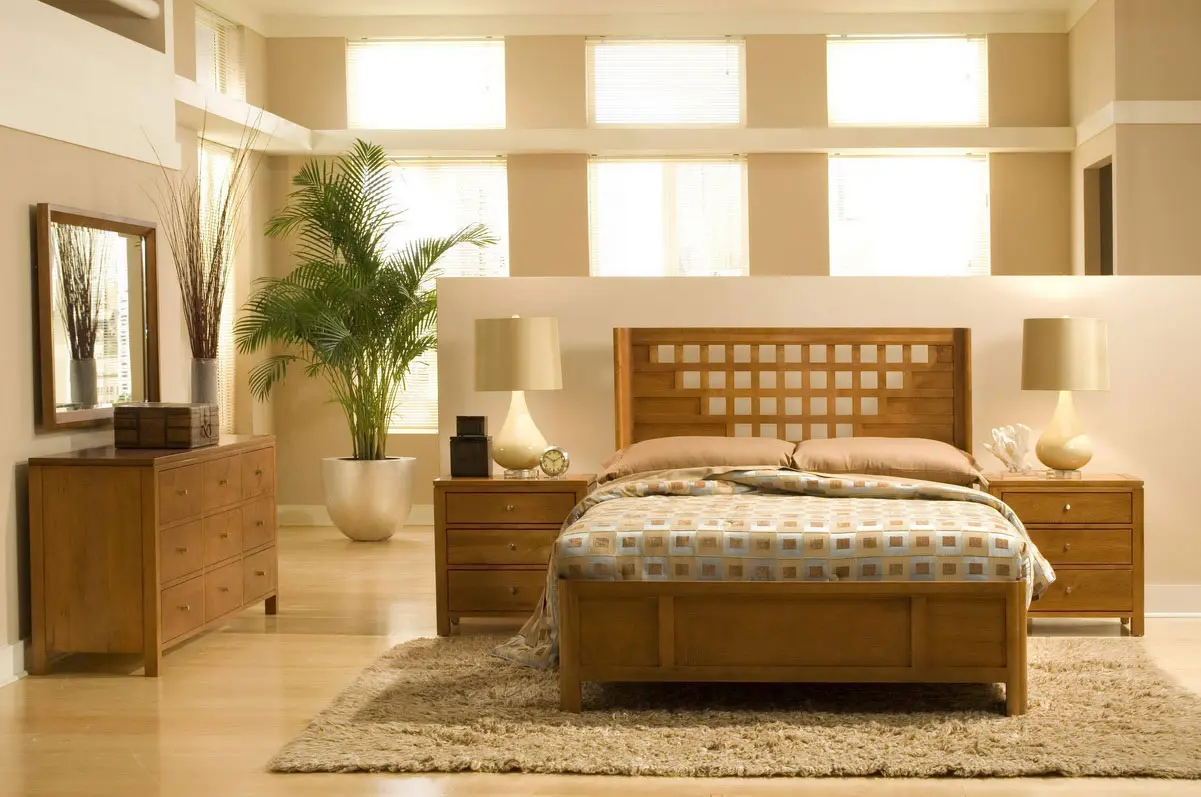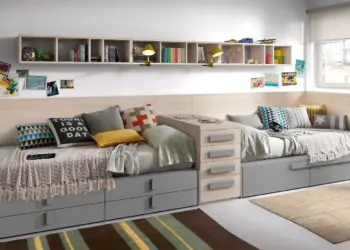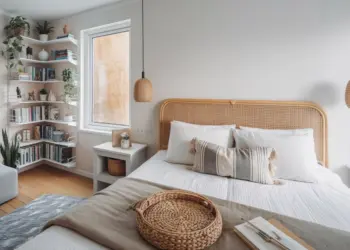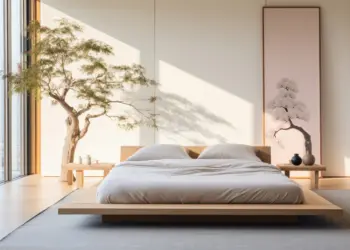In the realm of home design, the bedroom stands as a personal sanctuary, a space where functionality meets comfort and style. Whether you are embarking on the journey of building a new home or renovating your existing space, the size of your bedroom is a critical design element that can significantly impact your overall comfort, quality of sleep, and aesthetic preferences. In this guide, we’ll explore the factors to consider when determining the ideal bedroom size for your needs.
Table of Contents
Understanding Your Lifestyle
Family Size Matters
Consider the number of people sharing the bedroom. A larger family may require more space to accommodate everyone comfortably.
Lifestyle Considerations
Evaluate your lifestyle – do you need space for a home office, workout area, or additional furniture? Tailor your bedroom size to fit your specific needs.
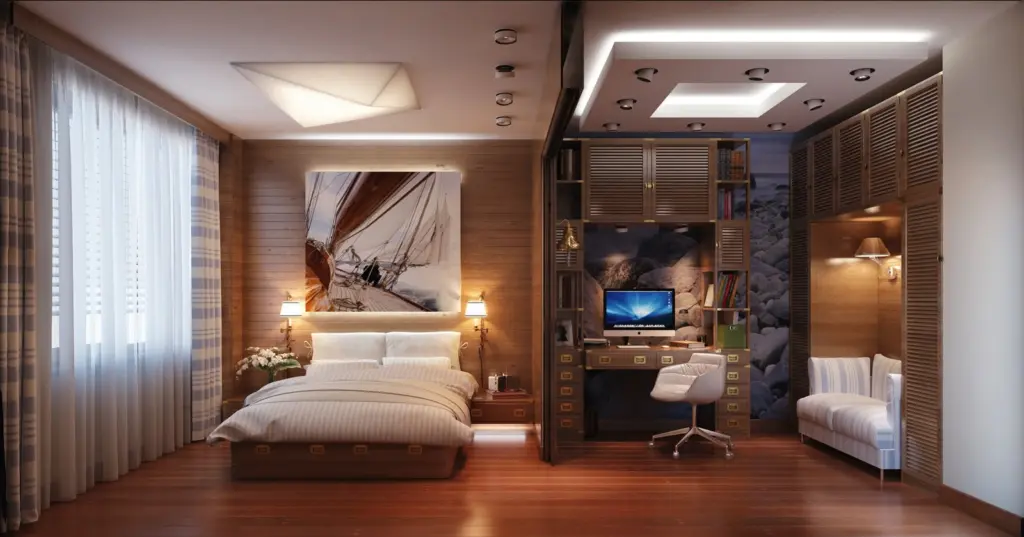
Measuring Your Space
Room Dimensions
Measure the dimensions of the available space. Consider factors like ceiling height, as this can impact the overall feel of the room.
Furniture Placement
Plan the placement of bedroom-furniture within the room. Ensure there’s enough space for movement and easy access to essential items.
Comfort is Key
Adequate Bed Space
Select a bed size that provides sufficient sleeping space without overcrowding the room.
Storage Solutions
Incorporate storage solutions that maximize space efficiency, such as built-in closets and under-bed storage.

Balancing Aesthetics and Functionality
Visual Appeal
Consider the visual aesthetics of the room. Choose a size that allows for aesthetically pleasing decor without making the space feel cramped.
Functionality
Ensure the room’s size aligns with its intended functionality. A bedroom should serve as a retreat, promoting relaxation and tranquility.
Temperature and Ventilation
Air Circulation
Factor in the room’s ventilation to maintain a comfortable temperature. A well-ventilated room contributes to a better sleeping environment.
Climate Considerations
Consider your local climate when choosing the bedroom size. Adequate insulation and space can impact the room’s temperature regulation.

Future-Proofing Your Choice
Anticipating Changes
Think about future changes in your life, such as a growing family or changing preferences. Opt for a bedroom size that accommodates potential adjustments.
Resale Value
Choosing a versatile bedroom size can enhance the resale value of your home. It appeals to a broader range of potential buyers.
Uncover the Psychological Impact of Bedroom Size
Psychological Space
Consider the psychological impact of the room size on your well-being. A spacious room can contribute to a positive mindset and overall mental health.
Clutter-Free Environment
A larger bedroom provides the advantage of maintaining a clutter-free environment, reducing stress and promoting relaxation.

Understanding the Impact of Bedroom Size
The average bedroom size in the United States, a key reference point in designing your ideal space, hovers around 132 square feet. However, the size spectrum spans from standard rooms to more expansive master bedrooms, accommodating diverse needs and lifestyles.
Exploring Master Bedrooms
The master bedroom, often the largest in a home, boasts dimensions of approximately 14 feet by 16 feet, totaling an expansive 224 square feet. This generous space not only accommodates a king-sized bed but also allows for additional amenities, such as walk-in closets and comfortable sitting areas.

Unveiling Standard Bedroom Dimensions
On average, a standard bedroom measures about 132 square feet, catering to various household members. While lacking the lavish features of a master bedroom, standard rooms offer versatility, commonly serving as spaces for children, teenagers bedroom, or guest rooms. Transforming a standard bedroom into a home office or crafting area is a creative way to maximize your home’s functionality.

Bedroom Sizes Across American Homes
Understanding the prevalence of different bedroom sizes in the United States provides valuable insights. On average, a typical American home comprises three bedrooms. However, this number can vary based on factors such as total square footage and location, with single-family homes generally having more bedrooms compared to apartments and condos.

Legal Building Code Requirements: Ensuring Compliance and Safety
As you embark on designing your bedroom, it’s crucial to be aware of legal building code requirements, which vary across states. The International Code Council (ICC) serves as a comprehensive resource for construction guidelines, and its International Residential Code (IRC) sets standards for residential structures.
Minimum Bedroom Size and Ceiling Height
According to IRC standards, a bedroom must be at least 70 square feet, with a minimum of 7 feet on one side. This size increases for additional occupants, emphasizing the importance of adequate space for comfort and safety. Moreover, bedroom ceiling heights must adhere to specific regulations, ensuring a minimum of seven feet for at least half of the ceiling.

Optimizing Small Bedrooms: Practical Tips for Space Enhancement
For those working with limited space, implementing strategic design choices can make a significant impact. Here are practical tips to make a small bedroom appear more spacious:
Choose Light Bedroom Paint Colors
Opt for light or neutral shades to create a brighter and airier feel. Light colors reflect light, making the room feel more expansive.
Use Smaller Furniture Pieces
Opt for queen or full-sized beds and consider wall-mounted furniture to maximize floor space.
Pick the Right Interior Design Style
Explore styles like midcentury modern or boho style that are well-suited to small spaces, utilizing elevated or lower furniture arrangements to create a sense of flow.
Find Creative Storage Solutions
Maximize limited space with multifunctional furniture and creative storage solutions.
Get Reflective with Mirrors
Leverage mirrors to create the illusion of space, reflecting light and visually expanding the room.
Utilize Vertical Space
Draw attention upward by incorporating tall headboards or hanging artwork, making the room feel instantly more spacious.
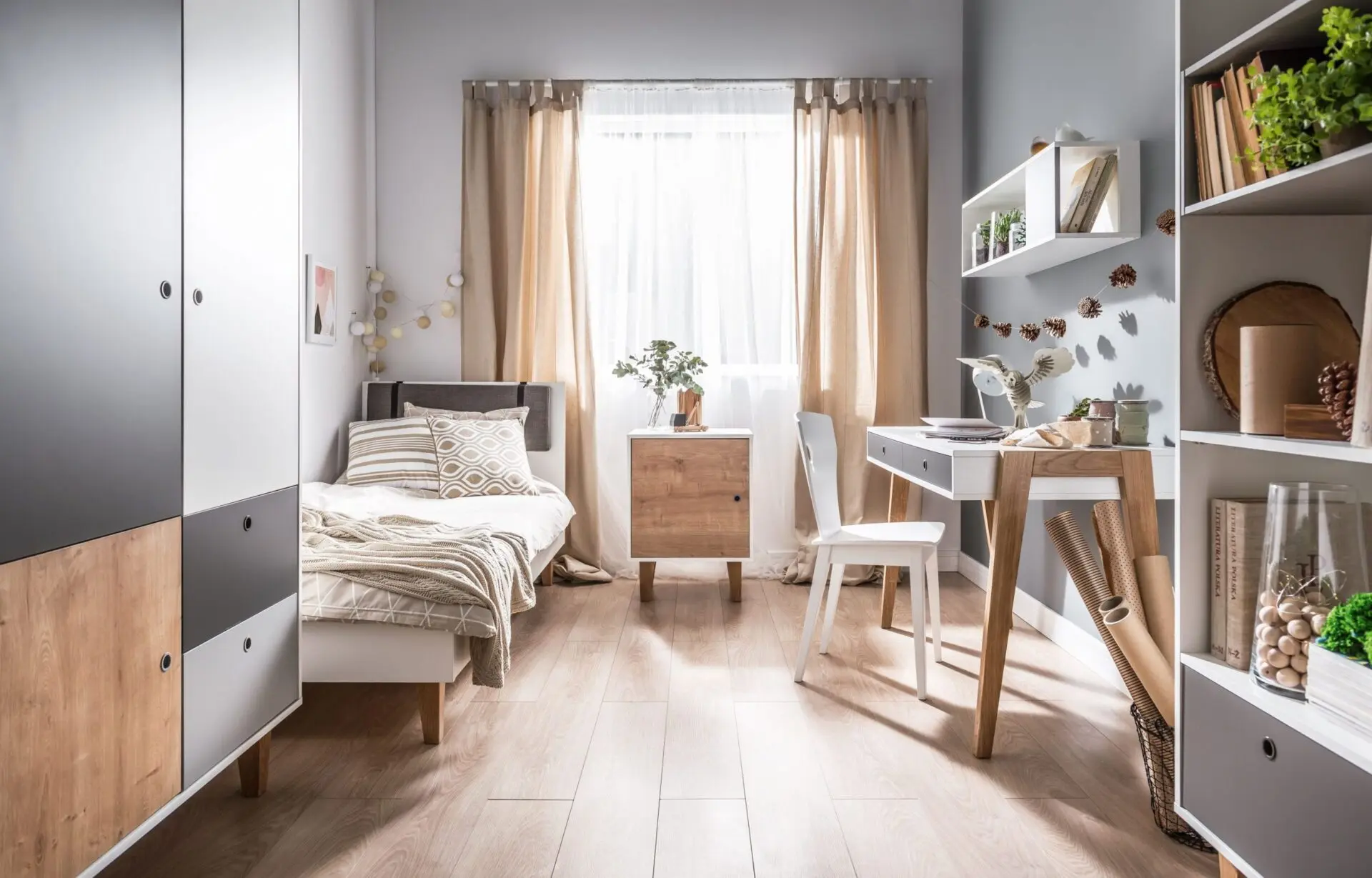
In conclusion, the design and optimization of your bedroom space go beyond mere aesthetics, incorporating legal standards, room functionality, and creative design choices. By understanding the diverse dimensions and legal requirements, coupled with strategic design considerations, you can create a bedroom that not only meets but exceeds your expectations for comfort and style.
FAQs
What is the ideal bedroom size?
The ideal bedroom size varies but is often considered to be around 200 to 250 square feet for a standard bedroom and larger for a master bedroom, providing ample space for furniture and movement .
Is a 15×15 bedroom big?
Yes, a 15×15 bedroom is considered spacious, providing 225 square feet of space. This size allows for various furniture arrangements and a comfortable living space .
Is a 12×12 bedroom big enough?
A 12×12 bedroom may be considered on the smaller side, providing 144 square feet. It can accommodate essential furniture but might limit the ability to incorporate larger pieces or create expansive layouts .
What is standard bedroom size
The standard bedroom size can vary, but it is often considered to be around 200 to 250 square feet for a standard bedroom and larger for a master bedroom, providing ample space for furniture and movement .
How big should a master bedroom be?
The size of a master bedroom typically ranges from 200 to 600 square feet or more, depending on preferences and available space. A larger size allows for additional features like a sitting area or en-suite bathroom .
What is a comfortable room size?
A comfortable room size varies based on its purpose. For bedrooms, the ideal size is often around 200 to 250 square feet for standard rooms, providing ample space for furniture and movement .
What is the size of an 11 by 12 bedroom?
An 11 by 12 bedroom has an area of 132 square feet. While it can accommodate essential furniture, it is on the smaller side and may limit design options .
How big is a big bedroom?
The perception of a “big” bedroom is subjective. Generally, bedrooms larger than the standard size, such as those exceeding 250 square feet, are considered spacious and allow for more extensive furniture arrangements and design choices.
What is the size of a modern bedroom?
A secondary bedroom’s typical size are 10 by 12 feet, or 120 square feet. You’ll have enough room for a full or queen bed as well as a few more modest bedroom furnishings. The typical guest bedroom is 10′ by 12′, or 120 square feet, which is comparable to the size of a secondary bedroom.
